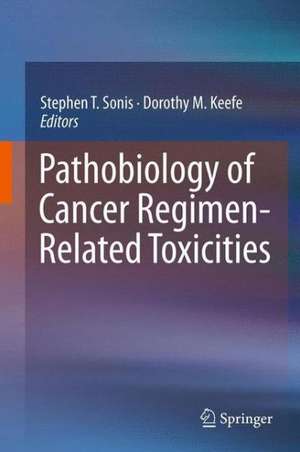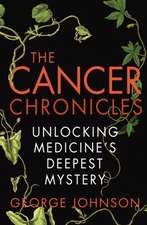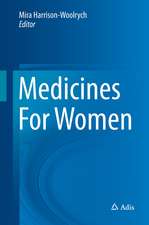Pathobiology of Cancer Regimen-Related Toxicities
Editat de Stephen T. Sonis, Dorothy M. Keefeen Limba Engleză Hardback – 26 ian 2013
| Toate formatele și edițiile | Preț | Express |
|---|---|---|
| Paperback (1) | 1094.60 lei 6-8 săpt. | |
| Springer – 24 iun 2015 | 1094.60 lei 6-8 săpt. | |
| Hardback (1) | 1103.95 lei 6-8 săpt. | |
| Springer – 26 ian 2013 | 1103.95 lei 6-8 săpt. |
Preț: 1103.95 lei
Preț vechi: 1162.06 lei
-5% Nou
Puncte Express: 1656
Preț estimativ în valută:
211.27€ • 219.75$ • 174.41£
211.27€ • 219.75$ • 174.41£
Carte tipărită la comandă
Livrare economică 15-29 aprilie
Preluare comenzi: 021 569.72.76
Specificații
ISBN-13: 9781461454373
ISBN-10: 1461454379
Pagini: 304
Ilustrații: X, 292 p.
Dimensiuni: 155 x 235 x 20 mm
Greutate: 0.66 kg
Ediția:2013
Editura: Springer
Colecția Springer
Locul publicării:New York, NY, United States
ISBN-10: 1461454379
Pagini: 304
Ilustrații: X, 292 p.
Dimensiuni: 155 x 235 x 20 mm
Greutate: 0.66 kg
Ediția:2013
Editura: Springer
Colecția Springer
Locul publicării:New York, NY, United States
Public țintă
ResearchCuprins
Preface.-Epidemiology and outcomes of regimen-related toxicities.- The biological basis for differences in normal tissue response to radiation therapy and strategies to establish predictive assays for individual complication risk.- The bystander effect: Ionizing radiation-induced non-targeted effects: Evidence, mechanism and significance.- The role of genes on the metabolism of chemotherapeutic agents and their impact on toxicity.- Animal models of regimen-related toxicities.- Nausea and Vomiting.- Mucositis.- Dermatitis and Alopecia.- Fibrosis.- Myelosuppression.- Neuropathy.- Fatigue.- Xerostomia.- Osteonecrosis.- Conclusions and therapeutic opportunities.- Index.
Textul de pe ultima copertă
Toxicities have been consistent undesirable companions of every form of radiation and drug cancer treatment regimens. In addition to the potential for toxicities to devastate patients’ quality of life, they generate huge incremental financial costs, and sap patients’ ability to tolerate definitive cancer therapy. And every new drug or biological has come with new side effects. Historically, regimen-related toxicities were viewed as the inevitable cost of treating cancer. But this may be about to change.
Discoveries in the past dozen years have painted a new picture of the pathobiology of almost all regimen-related toxicities. The mechanistic complexities that underlie radiation- and chemotherapy-induced tissue injury or systemic symptoms have been pieced together in an incremental sequence which now provides multiple targets for effective toxicity interventions.
This book brings together, for the first time in a single volume, the most current information regarding both general principles guiding current thinking about the pathogenesis of regimen-related toxicities and the specific biological underpinnings of the most common side effects of cancer therapy. The contents provide information that is essential to clinicians and basic and translational scientists interested in cancer therapy and its toxicities.
Discoveries in the past dozen years have painted a new picture of the pathobiology of almost all regimen-related toxicities. The mechanistic complexities that underlie radiation- and chemotherapy-induced tissue injury or systemic symptoms have been pieced together in an incremental sequence which now provides multiple targets for effective toxicity interventions.
This book brings together, for the first time in a single volume, the most current information regarding both general principles guiding current thinking about the pathogenesis of regimen-related toxicities and the specific biological underpinnings of the most common side effects of cancer therapy. The contents provide information that is essential to clinicians and basic and translational scientists interested in cancer therapy and its toxicities.
Caracteristici
Defines the scope, impact and behavior of cancer regimen-related toxicities
Discusses the most current thinking around the pathobiology of specific, common, and representative toxicities
Discusses the common biological relationships between toxicities, bioinformatical approaches to analysing key and common pathways, and strategies for the development of effective interventions
Discusses the most current thinking around the pathobiology of specific, common, and representative toxicities
Discusses the common biological relationships between toxicities, bioinformatical approaches to analysing key and common pathways, and strategies for the development of effective interventions









